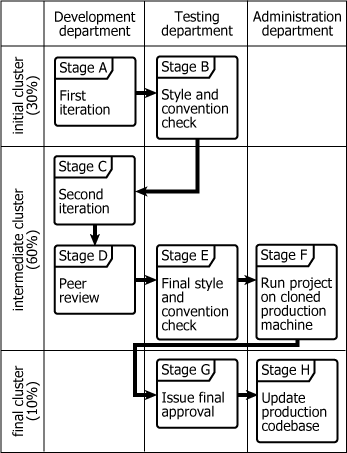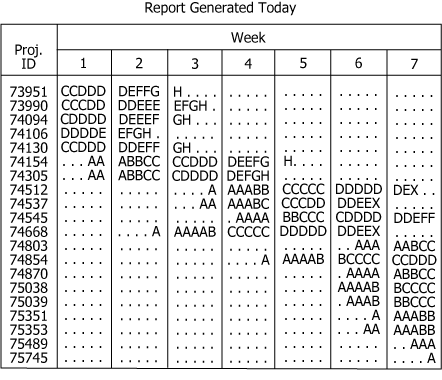Events & Promotions
|
|

GMAT Club Daily Prep
Thank you for using the timer - this advanced tool can estimate your performance and suggest more practice questions. We have subscribed you to Daily Prep Questions via email.
Customized
for You
Track
Your Progress
Practice
Pays
Not interested in getting valuable practice questions and articles delivered to your email? No problem, unsubscribe here.
- Nov 18
11:00 AM PST
-12:00 PM PST
Join us in a live GMAT practice session and solve 30 challenging GMAT questions with other test takers in timed conditions, covering GMAT Quant, Data Sufficiency, Data Insights, Reading Comprehension, and Critical Reasoning questions. - Nov 22
11:00 AM IST
-01:00 PM IST
Do RC/MSR passages scare you? e-GMAT is conducting a masterclass to help you learn – Learn effective reading strategies Tackle difficult RC & MSR with confidence Excel in timed test environment - Nov 23
11:00 AM IST
-01:00 PM IST
Attend this free GMAT Algebra Webinar and learn how to master the most challenging Inequalities and Absolute Value problems with ease. - Nov 25
10:00 AM EST
-11:00 AM EST
Prefer video-based learning? The Target Test Prep OnDemand course is a one-of-a-kind video masterclass featuring 400 hours of lecture-style teaching by Scott Woodbury-Stewart, founder of Target Test Prep and one of the most accomplished GMAT instructors.
Kudos
Bookmarks
At a certain company, successful projects proceed through 8 stages—Stages A through H. An active project is one that is currently in one of these 8 stages. If a stage of a project is completed during a given day, the project is immediately moved to the next stage. At the end of each day, the current stage of each active project is recorded. Some stages require as little as 1 day of work, and none requires more than 3 days of work. A project is said to be delayed if it spends more time at a stage than is required to complete the work. If a project is canceled, the current stage for the day is recorded as Stage X, and the project is no longer considered an active project.
Stage H typically lasts 1 day.
Be sure to select an answer first to save it in the Error Log before revealing the correct answer (OA)!
Difficulty:
 5%
(low)
5%
(low)
Question Stats:
90% (03:17) correct 10%
(03:15)
wrong
10%
(03:15)
wrong  based on 1109
sessions
based on 1109
sessions
History
Date
Time
Result
Not Attempted Yet
ID: 100490
Which one of the following statements is most strongly supported by the information presented in the tabs?
Which one of the following statements is most strongly supported by the information presented in the tabs?
| The first stage of each project is handled by an individual from the administration department. | |
| The final stage of each project is handled by an individual from the development department. | |
| Stage F typically lasts 4–6 days. | |
| Stage H typically lasts 1 day. | |
| Stage X typically comes immediately after Stage C. |
ShowHide Answer
Official Answer
Stage H typically lasts 1 day.
74154: Delayed
74854: Delayed
75745: Not necessarily delayed
Be sure to select an answer first to save it in the Error Log before revealing the correct answer (OA)!
Difficulty:
 15%
(low)
15%
(low)
Question Stats:
72% (01:14) correct 28%
(01:53)
wrong
28%
(01:53)
wrong  based on 1283
sessions
based on 1283
sessions
History
Date
Time
Result
Not Attempted Yet
ID: 100491
For each of the following projects, select Delayed if it can be inferred from the information in the tabs that the project must have experienced a delay at one or more stages. Otherwise, select Not necessarily delayed.
For each of the following projects, select Delayed if it can be inferred from the information in the tabs that the project must have experienced a delay at one or more stages. Otherwise, select Not necessarily delayed.
| Delayed | Not necessarily delayed | |
| 74154 | ||
| 74854 | ||
| 75745 |
ShowHide Answer
Official Answer
74154: Delayed
74854: Delayed
75745: Not necessarily delayed
Initial cluster: Yes
Intermediate cluster: Yes
Final cluster: No
Be sure to select an answer first to save it in the Error Log before revealing the correct answer (OA)!
Difficulty:
 35%
(medium)
35%
(medium)
Question Stats:
69% (01:23) correct 31%
(01:40)
wrong
31%
(01:40)
wrong  based on 1181
sessions
based on 1181
sessions
History
Date
Time
Result
Not Attempted Yet
ID: 100492
For each of the following clusters of stages, select Yes if at least two active projects are currently in a stage within that cluster. Otherwise, select No.
For each of the following clusters of stages, select Yes if at least two active projects are currently in a stage within that cluster. Otherwise, select No.
| Yes | No | |
| Initial cluster | ||
| Intermediate cluster | ||
| Final cluster |
ShowHide Answer
Official Answer
Initial cluster: Yes
Intermediate cluster: Yes
Final cluster: No

GID2277.gif [ 17.52 KiB | Viewed 11787 times ]

GID2278.gif [ 21.26 KiB | Viewed 11742 times ]
Attachment:
GID2277.gif [ 17.52 KiB | Viewed 11787 times ]
Attachment:
GID2278.gif [ 21.26 KiB | Viewed 11742 times ]
Kudos
Bookmarks
What does last question mean?
Kudos
Bookmarks
Last question is asking us to check whether there are at least 2 projects in the same phase on the 5th Day of the 7th week(present day).












